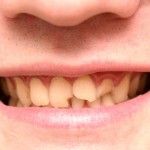
Traumatic dental injuries (TDIs) account for a considerable proportion of bodily injuries. While the mouth occupies around 1% of the total body area it accounts for about 5% of all body injuries. In the UK around 1 in 5 children have suffered TDIs to their permanent teeth before leaving school. Nevertheless, global TDI frequency is unknown, probably because TDI diagnosis is not standardised.
The aim of this review was to provide a reliable global estimate of the prevalence and incident rates of Traumatic dental injuries (TDIs)
Methods
Searches were conducted in the PubMed, Scopus, Web of Science, and GOOGLE Scholar databases. In addition, websites of scientific societies of dental traumatology, paediatric dentistry, endodontics, oral-maxillofacial surgery and World Health Organization and the US Centres for Disease Control and Prevention were searched. Searches were limited to the years 1996-2016. Original authors were contacted for missing data.
Observational studies reporting proportions of individuals with at least one TDI (prevalence) and who developed TDI (incidence rate) were considered. Data were extracted or calculated by one author and checked by the remaining authors. Study quality was assess using an adapted version of the Newcastle- Ottawa scale (NOS) for disease frequency studies. Poor quality studies (scores 0-2) were excluded from the analysis.Prevalence rates to permanent dentition, primary dentition and in 12-year-olds, incidence rate to any tooth for any age, male-to-female prevalence ratio (PR) in 12-year-olds, with 95% confidence intervals (95 CIs), were extracted/calculated. Study quality, Z-score distribution, funnel plot symmetry analysis, between-study heterogeneity, sensitivity, and subgroup analyses were performed.
Results
- No disease registries of population surveys covering at least 10,000 people were identified.
- 152 studies were included covering more than one purpose (102 for TDI prevalence in permanent teeth, 46 TDI prevalence in primary teeth, 42 for TDI prevalence among 12-year-olds and 11 for TDI incidence rate).
- Data from 268,755 individuals [age range 7-98 yrs; median 13.8yrs] provided a global estimate of pooled prevalence for TDI in permanent teeth = 15.2% (95%CI, 13.0%-17.4%) .
- Global TDI prevalence in primary teeth [59,436 individuals] = 22.7% (95 %CI, 17.3%-28.7%)
- Global TDI prevalence in children aged 12±1 years [33,829 individuals]
- Global TDI incidence rate. 233480 individuals = 2.82 events per 100 persons per year (95%CI, 2.28%-3.42%). There was no difference between the rates in permanent and primary teeth.
- Using the 2016 World population approximately 900 million people had at least 1 TDI and approximately 180 million children had at least 1 TDI in their primary teeth.
Conclusions
The authors concluded: –
These results demonstrate that TDI is very frequent worldwide and is still a neglected and unknown condition, probably because there are no universally acknowledged diagnostic, classification, and registration systems. This limited knowledge and awareness at public health level and among healthcare policymakers makes it difficult to allocate adequate resources, implement preventive pro- grams, organize proper emergency services and first aid, and design acceptable awareness campaigns at the population level
Comments
While this review has been well conducted the authors highlight a number of potential problems with this study including the quality of the primary studies and publication and selection bias issues. There are also problems regarding the world representation of the available studies as there are no large population studies or disease registries. These problems should be taken into consideration when interpreting the findings.
As the authors point out the data suggest that with almost 1 billion people suffering with TDIs this condition would rank 5th in the Global Burden of Disease (GBD) list of main chronic diseases occurring more frequently than periodontal disease and severe tooth loss.
Links
Primary Paper
Petti S, Glendor U, Andersson L. World traumatic dental injury prevalence and incidence, a meta-analysis-One billion living people have had traumatic dental injuries. Dent Traumatol. 2018 Apr;34(2):71-86. doi:10.1111/edt.12389. Review. PubMed PMID: 29455471.
Other references
Dental Elf – 4th Nov 2016
Dental Elf – 21st Nov 2014
Dental Elf – Dental Trauma Blogs
